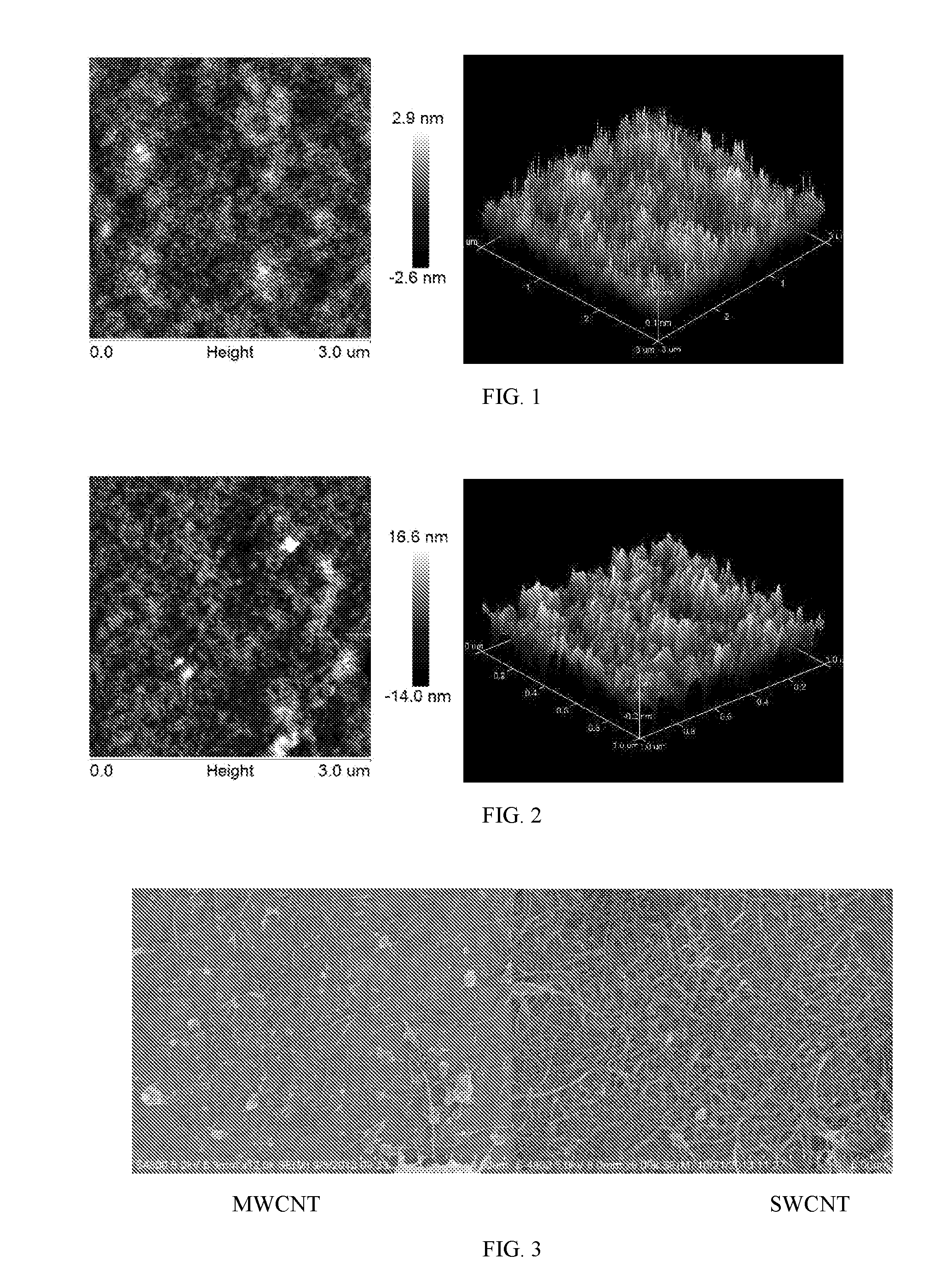High-dispersion carbon nanotube composite conductive ink
a carbon nanotube and composite technology, applied in the field of high-dispersion carbon nanotube composite conductive ink, can solve the problems of reducing the conductive properties of formed carbon nanotube conductive films, restricting the wide application range reducing the excellent performance and practical application development of ito transparent conductive films, so as to enhance improve the dispersibility of common solvents, and improve the conductive properties of conductive ink
- Summary
- Abstract
- Description
- Claims
- Application Information
AI Technical Summary
Benefits of technology
Problems solved by technology
Method used
Image
Examples
Embodiment Construction
[0024]This invention is further described in details in combination with embodiments.
[0025]The poly-3,4-ethylene dioxythiophene:polystyrene sulfonate aqueous solution (PEDOT:PSS) in the invention is a purchased product; the PEDOT content is 1.8%, and the content of sodium polystyrene sulfonate is 0.5%. It can be prepared according to the following step: dissolve PEDOT in water, and add 25% aqueous solution of PSS for solubilization due to poor solubility.
Embodiment 1Modified single-walled carbon nanotube solution in methanol10 mlConductive polymer aqueous solution 1.8% PEDOT: PSS solution20 mlConcentrated to a volume of 15 ml
[0026]Preparation method: Disperse 0.05 g of single-walled carbon nanotube (SWCNT) in 20 ml of methanol under ultrasound condition for 20 min to form SWNT suspension. Place this SWCNT suspension in a UV washing machine for treating 40 min, to get SWCNT powder; take 20 ml of deionized water to a single-necked flask, then add 10 ml of concentrated HNO3 (68 wt %) a...
PUM
| Property | Measurement | Unit |
|---|---|---|
| diameter | aaaaa | aaaaa |
| diameter | aaaaa | aaaaa |
| force | aaaaa | aaaaa |
Abstract
Description
Claims
Application Information
 Login to View More
Login to View More - R&D
- Intellectual Property
- Life Sciences
- Materials
- Tech Scout
- Unparalleled Data Quality
- Higher Quality Content
- 60% Fewer Hallucinations
Browse by: Latest US Patents, China's latest patents, Technical Efficacy Thesaurus, Application Domain, Technology Topic, Popular Technical Reports.
© 2025 PatSnap. All rights reserved.Legal|Privacy policy|Modern Slavery Act Transparency Statement|Sitemap|About US| Contact US: help@patsnap.com

